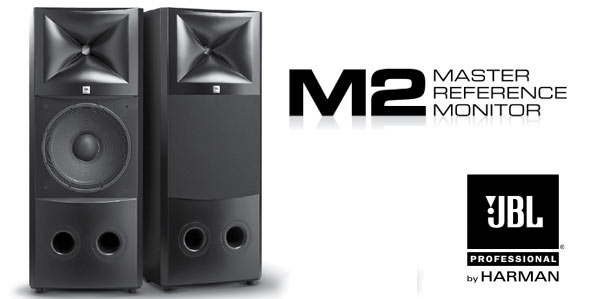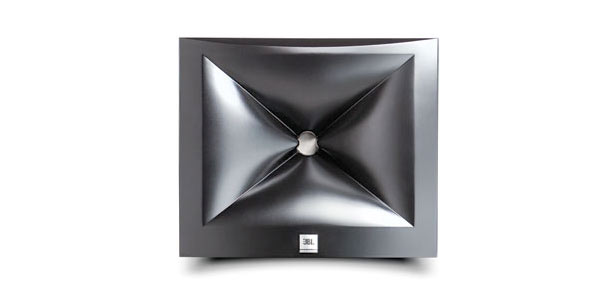A Field Trip To Harman: Part III
The last stage of my Harman tour took Sean E. Olive, Director of Acoustic Research, and I to areas that contain a few anechoic chambers. You may have seen one of these specially designed, super quiet rooms in an audio textbook but until you’ve had a chance to actually spend a few minutes in one, you can’t really understand how really creepy it can be. My first experience with an anechoic chamber was at UCLA many years ago…and I can recall hearing my heartbeat and nervous system after settling down in the room with the door closed. The ones at Harman are used to measure and test speaker response, diffusion patterns and overall performance of different drivers. We didn’t spend much time inside.
There was one particular chamber that had an array of calibration microphones uniformly spaced along the perimeter of a vertically oriented quarter circle. Dr. Olive explained that this particular setup was used to test how much off axis sound comes from a speaker. The best performance can be found by listening to a speaker from right in front of it (German Physiks omni directional designs not withstanding). What happens to the sound as you move away from the front is also tremendously important because that sound will also be bouncing around the room and may not contain the optimal blend of the entire frequency response.
Our final stop was in a room housing a stereo pair of M2 Master Reference Monitors. I’ve spoken of these amazing speakers in a previous post (click here to read the post) and I did get the chance to audition them at last year’s Rocky Mountain Audio Fest. I was impressed and very interested because of the new drivers that JBL developed to extend the accuracy of ultrasonic and low frequency playback. I actually met the engineer that developed the D2 dual-diaphragm dual voice-coil high-frequency compression driver at the Newport show. He was pretty proud of his accomplishment and he should be.
Dr. Olive handed me one of the drivers and it must have weighed 15 pounds, yet it fit in the palm of my hand. I also checked out the unique construction of the 2216Nd Differential Drive low-frequency transducer…another real marvel of engineering. The third piece of the M2 is the “Image Control waveguide” double axis horn (see figure below).
Figure 1 – The High Frequency Driver and Image Control Guide for the JBL M2 Reference Monitor.
As we proceeded through the rest of their research space, we encountered an engineer named Charles and briefly discussed the M2 studio monitors that we had experienced. It found it very interesting that the crossover network is done in the digital domain in an outboard amplifier (the Crown® I-TechPower Amplifiers, which have internal BSS® OMNIDRIVE HD™ Digital Signal Processing). This seems to be a trend in emerging high-end/studio monitoring. But what does it mean for maker of high-end DACs when the analog output is simply routed right back to another ADC?
The new-patented technologies associated with the M2 Reference Monitors are certainly compelling, but the proof is in the listening. And the critical listening that I did at Harman was everything I could have imagined. I’ll talk about what I listened to and my reactions tomorrow.



Mark,
I could use some advice regarding speaker availability. I am looking for someting in the $2500/pair range that are not Towers. I am replacing Klipsch Heresy III’s and need to find a quality speaker that is less than 25″ tall, due to space limitations. I like my Klipsch speakers but am hoping for better sound quality. Any advice would be greatly appreciated. Thanks!!
John, I don’t do a lot of shopping in that size/price range but I wouldn’t hesitate to recommend B&W speakers (I’ve used them for years). And given my recent experience with JBL/Harman, I can’t imagine that you wouldn’t be able to find something from them that works for you.
I also auditioned the JBL M2 at the RMAF a few months ago. It was the best system I’ve heard in a long time, certainly the best sounding system at the show. Seemed like a significant leap forward. I’d love to hear them in a good room. We compared with the DSP switched in and out and it was great both ways, but the DSP system (Behringer?) fixed just about everything wrong with the hotel room acoustics. Quite amazing actually.
Not what I was expecting from JBL and Crown which I recall from my past life in audio as pretty all around awful.
You’re right, the folks at Harman/JBL have out done themselves with the M2. Check out today’s post.
Hi Mark,
Every few years, somebody new makes a dynamic speaker a little more refined than before. Because it has more kick and vocal presence, it stands out against the popular super speakers.
We loved the Altec Voice of the Theaters, then the big JBLs. The Klipschorns and their kin ruled for some years. Loved the impact, but the highs were too rough. We settled for some very clear speakers with OK dynamics for some years: WAMMs, IRSes and a few others. Then Avantgarde did the big horn thing again and reminded us of music’s punch. My compression driver speaker of choice has long been the top Westlake Audio.
TAD has gained lots of traction in the audiophile community, but it won’t compete when it comes to kick in the highs and upper mids. I hope these new JBL’s can exceed all of these earlier speakers with slam. Full dynamic content and perfect phase integrity together are needed if we are ever to appreciate the high resolution recordings that have you as their champion, Mark.
However, don’t send your check just yet, Mark. You owe it to yourself to audition my Atmatec BRASS speakers with Jack Smiley’s tweeter/mids (read AMTs on steroids). We’re close by, and it’s high time you heard how wonderful your recordings sound. See if you can pay us a visit before THEShow Newport Beach. It will give you a whole new perspective on your high res music!